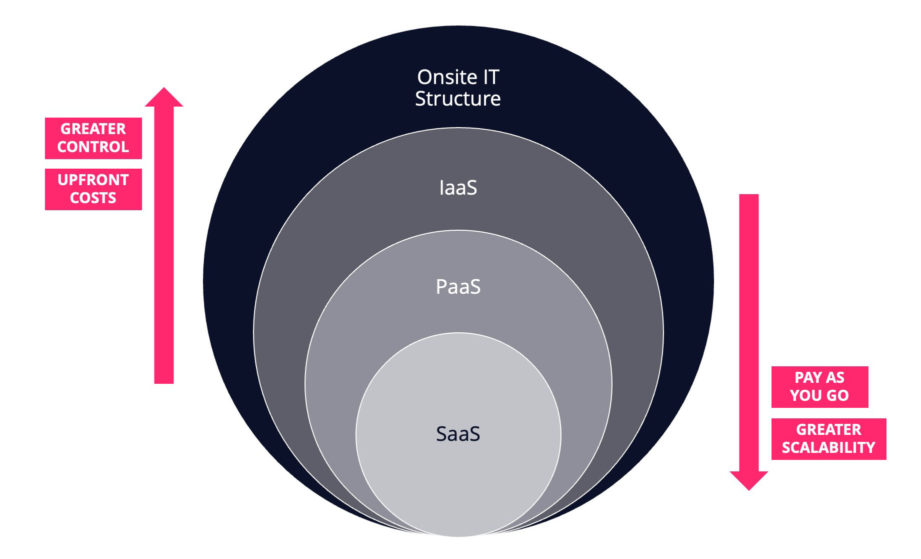What is Cloud Deployment
Cloud deployment is the manner in which businesses select, manage, access and scale their cloud computing services. Cloud computing is not a one-size-fits-all approach. A large established business with thousands of customers will need a different cloud deployment model than a small startup. The type of data that a business routinely handles will also drive what cloud deployment model is best. The amount of data that a business needs to store in the cloud also determines the type of cloud infrastructure that they need.
Cloud Deployment Models
There are four main types of cloud deployment models: public cloud, private cloud, hybrid cloud and multi cloud. You should select the cloud deployment model with the features that best suit your business needs.
Public Cloud
The public cloud is typically the most cost-effective option for many businesses. With a public cloud, your entire data center is managed by a third-party cloud service provider. Cloud service providers include Amazon Web Services (AWS), Google Cloud Platform (GCP), and Microsoft Azure. The service provider manages your entire cloud infrastructure. You gain access to your data and/or applications on the cloud with ease over the Internet.
The public cloud deployment model frees your business up to focus on gaining insights from your data, instead of spending large amounts of time managing it. However, you do lose some visibility into where your data and/or applications are being stored. Furthermore, since the public cloud is an inherent shared design, it comes with an increased security risk. Over time, however, cloud service providers have continued to increase security controls.
Private Cloud
For companies that handle very sensitive data such as health and financial records, a private cloud deployment model may be best. With the private cloud, you have dedicated access to your cloud infrastructure. Unlike the public cloud, the private cloud is a single-tenant deployment model. Because of this, your security risk is much lower with a private cloud.
The tighter security and single-tenant access does come at a steep price, however. To get around this, you may decide to only migrate certain portions of your data to the private cloud.
Hybrid Cloud
To gain the best of both worlds, a hybrid cloud deployment model is an attractive option. With the hybrid cloud, you can mix your cloud deployment strategy. You can use both a public cloud and private cloud to host your data and applications. For storing large amounts of data at the lowest cost, you can use a public cloud. For data that require tighter security, you can use a private cloud.
Managing your data in multiple places does have its challenges. Good cloud data management ensures you don’t compromise or potentially lose large amounts of business-critical data. You should also develop a good cloud strategy to ensure your cloud deployment model is in alignment with the overall goals of your business.
Multi Cloud
Another alternative is to remain in the public cloud space, but with multiple public cloud service providers. This cloud deployment model is known as the multi cloud. With a multi cloud, you can pick and choose the best features from different public cloud service providers that best suit your business needs. Public cloud computing has come a long way. Public cloud service providers continue to differentiate themselves with advanced features. You benefit from the advancement with cloud computing by developing a multi cloud deployment model.
Cloud Deployment FAQs
What are the types of Cloud Service Delivery Models?
Cloud computing service providers offer various models to access their cloud infrastructure: IaaS, PaaS and SaaS. You can select the type of service model that works best for your company or business. There are three main types of cloud computing service models.
With IaaS (Infrastructure as a Service), you own and manage the software components of the cloud infrastructure. The hardware components are managed by the cloud service provider.
With PaaS (Platform as a Service), you own and manage the applications that run on the software components of the cloud infrastructure. The software and hardware components are managed by the cloud service provider.
With SaaS (Software as a Service), you access the application via the internet. The applications, software and hardware components are managed by the cloud service provider.
What is the difference between the Cloud Service Delivery Models and the Traditional IT Model?
You gain access to your cloud service using various cloud service delivery models (IaaS, PaaS, SaaS). The type of cloud service delivery model you choose depends on how much physical computing infrastructure you would like to manage.
Figure 1 below compares the more traditional onsite IT structure model with the various types of cloud computing service models described above. You gain more control over your cloud infrastructure, applications, and resources, the closer you get to a traditional IT model. However, the time and upfront capital investment is significant. You will also bear the ongoing maintenance costs of your entire infrastructure regardless of utilization.
The amount of time and money that you invest into the management of cloud computing services decreases the closer you get to a SaaS cloud computing model. The SaaS model frees you to focus more of your time and energy on your business, and not be consumed by managing vast amounts of data.

Is cross cloud deployment necessary?
For many businesses, a single cloud deployment model may be insufficient to meet the varying data needs across their departments. The size and visibility of your business may also impact your preferred cloud deployment model. For smaller startups, cloud deployment significantly reduces their upfront capital costs. For larger established firms with large amounts of data and several thousand customers, security and high performance is a greater concern. These factors guide how you choose your cloud deployment model. In these cases, you may need to consider a hybrid or multi cloud strategy.
Cloud Optimization with Silk
Regardless of your cloud deployment model or cloud service delivery model, Silk supercharges your cloud computing experience. The Silk Cloud Platform is a virtualization layer that sits between your data-intensive workloads and the underlying cloud infrastructure. With Silk, you gain 10x faster performance compared to the native cloud alone. This can be done without the need to refactor or rewrite your specialized workloads and applications. Silk allows you to simply lift and shift workloads onto your cloud deployment model of choice.
Silk also offers a range of enterprise data services such as zero-footprint snapshots, deduplication, and thin provisioning. These services help to reduce your data footprint on the cloud, reducing the amount of cloud resources that you need. In turn, this helps to minimize your cloud bill since you no longer have to worry about too many snapshots (backup copies) ballooning through your allocated cloud resources.
Silk is always on and available, so you never need to worry about not having access to your data once you deploy your data to the cloud.




